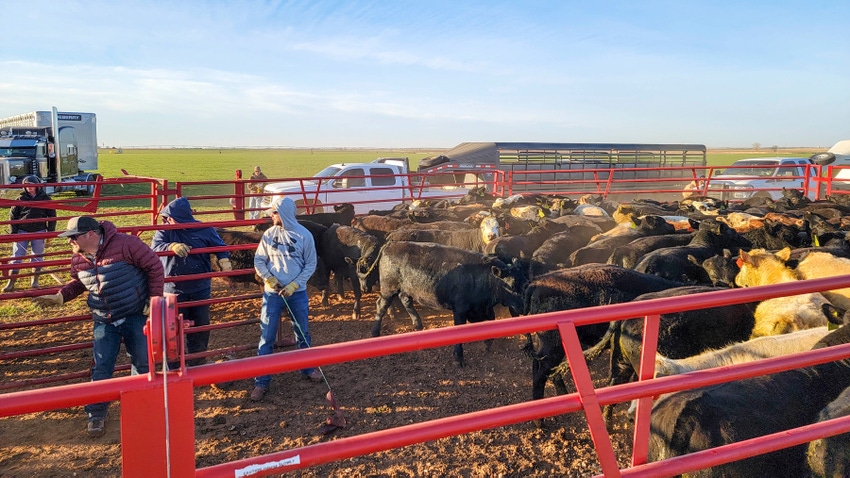Unlocking Growth Potential: Bagley Risk Management Approaches
Unlocking Growth Potential: Bagley Risk Management Approaches
Blog Article
Recognizing Livestock Threat Protection (LRP) Insurance Policy: A Comprehensive Guide
Browsing the world of livestock danger defense (LRP) insurance policy can be an intricate undertaking for many in the agricultural field. This type of insurance policy offers a safeguard against market fluctuations and unexpected conditions that might affect animals producers. By recognizing the intricacies of LRP insurance policy, manufacturers can make enlightened decisions that might secure their operations from financial risks. From exactly how LRP insurance policy works to the numerous insurance coverage options readily available, there is much to reveal in this detailed guide that can possibly shape the means animals manufacturers come close to threat monitoring in their services.

Exactly How LRP Insurance Coverage Works
Occasionally, recognizing the technicians of Animals Threat Protection (LRP) insurance coverage can be complex, yet breaking down just how it functions can give clarity for herdsmans and farmers. LRP insurance coverage is a threat management device created to safeguard livestock manufacturers against unanticipated cost declines. It's crucial to note that LRP insurance coverage is not an income guarantee; instead, it focuses solely on cost risk defense.
Eligibility and Protection Options

When it pertains to protection options, LRP insurance coverage provides manufacturers the flexibility to pick the insurance coverage degree, insurance coverage period, and recommendations that ideal suit their risk monitoring requirements. Protection levels usually range from 70% to 100% of the expected ending worth of the insured livestock. Producers can likewise choose protection durations that straighten with their manufacturing cycle, whether they are insuring feeder livestock, fed livestock, swine, or lamb. Recommendations such as rate risk security can even more customize insurance coverage to protect versus unfavorable market variations. By comprehending the eligibility standards and insurance coverage choices readily available, animals producers can make informed decisions to take care of risk properly.
Advantages And Disadvantages of LRP Insurance Coverage
When examining Livestock Threat Security (LRP) insurance policy, it is necessary for livestock producers to weigh the advantages and disadvantages intrinsic in this risk monitoring device.

One of the primary benefits of LRP insurance coverage is its ability to give protection against a decrease in livestock costs. In addition, LRP insurance coverage uses a level of flexibility, allowing manufacturers to personalize coverage levels and plan durations to fit their particular needs.
Nonetheless, there are additionally some drawbacks to consider. One restriction of LRP insurance is that it does not secure versus all types of risks, such as illness break outs or natural catastrophes. In addition, premiums can often be costly, especially for manufacturers with huge livestock herds. It is important for producers to carefully assess their private danger direct exposure and monetary situation to figure out if LRP insurance policy is the best threat management tool for their operation.
Comprehending LRP Insurance Coverage Premiums

Tips for Making The Most Of LRP Benefits
Making the most of the benefits of Livestock Threat Protection (LRP) insurance policy calls for critical preparation and proactive danger monitoring - Bagley Risk Management. To take advantage of your LRP protection, think about the adhering to suggestions:
Regularly Evaluate Market Conditions: Remain educated concerning market trends and price changes in the animals sector. By keeping an eye on these variables, you can make informed decisions about when to buy LRP coverage to protect against potential losses.
Establish Realistic Coverage Levels: When picking coverage levels, consider your manufacturing prices, market value of livestock, and possible risks - Bagley Risk Management. Setting realistic protection degrees makes sure that you are adequately secured without overpaying for unneeded insurance policy
Expand Your Coverage: Rather of counting entirely on LRP insurance coverage, consider expanding your risk management techniques. Combining LRP with various other danger administration tools such as futures agreements or choices can supply extensive coverage versus market uncertainties.
Review and Readjust Protection Regularly: As market problems alter, regularly review your LRP insurance coverage to ensure it aligns with your existing danger exposure. Changing protection degrees and timing of purchases can help maximize your risk defense method. By following these suggestions, you can maximize the advantages of LRP insurance coverage and secure your livestock procedure against unanticipated threats.
Final Thought
To conclude, livestock risk protection (LRP) insurance is a useful device for farmers to take care of the economic threats related to their livestock procedures. By comprehending exactly how LRP works, qualification and protection options, in addition to the pros and cons of this insurance policy, farmers can make educated choices to safeguard their Look At This resources. By meticulously thinking about LRP costs and carrying out techniques to make the most of advantages, farmers can mitigate potential losses and guarantee the sustainability of their operations.
Animals producers interested in getting Animals Risk Security (LRP) insurance coverage can explore a range of qualification requirements and coverage alternatives tailored to their certain animals procedures.When it comes to insurance coverage options, LRP insurance coverage uses manufacturers the adaptability Extra resources to choose the coverage degree, protection period, and recommendations that ideal match their risk monitoring requirements.To realize the complexities of Animals Danger Security (LRP) insurance coverage fully, comprehending the factors influencing LRP insurance policy premiums is crucial. LRP insurance coverage costs are determined by different components, consisting of the protection degree selected, the expected rate of animals at the end of the insurance coverage duration, the type of animals being insured, and the length of the insurance coverage duration.Evaluation and Readjust Coverage Regularly: As market problems transform, periodically evaluate your LRP coverage to guarantee it straightens with your current risk direct exposure.
Report this page